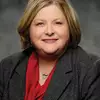Working and speaking together, through professional associations, makes the voices of cardiovascular experts more likely to be heard.
The future of healthcare legislation is, to say the least, uncertain. This reality—along with regulatory uncertainty and a steady stream of new technology, new science and new ways of doing business—makes quality care a moving target.
Add to that the fast pace of innovation in cardiology. What seemed a sure thing only five years ago already could be long gone, and the next game-changer might be around the corner.
If it is challenging for experts in cardiovascular care to keep up, it must be even harder for policymakers and legislators. In some cases, regulation or recognition might be too slow or long overdue; in other cases, legislators might pass down rules that don’t reflect the current realities of technology, science or practical considerations of providing quality care. Stories illustrating such disconnects are plentiful, from Capitol Hill to state legislatures around the country.
To protect quality cardiovascular care, decision makers must hear the voices and expertise of the specialty’s practitioners. In addition, the careers of practitioners, whose skills and knowledge base contribute to quality cardiovascular care, should be protected.
So, how can you protect quality care and your career? Obviously, cardiovascular professionals are not professional lobbyists. You joined your field to help patients and save lives, not to fight for politicians’ attention. You are already busy, and needed, where you work. So, when it comes to advocacy, you need help. Professional associations can provide crucial support.
How professional associations help with policy problems
Many professional associations, including the Alliance of Cardiovascular Professionals (ACVP), give individual professionals and experts access to a voice larger than their own to influence regulators and lawmakers in meaningful ways. Speaking with the support of hundreds or thousands of members makes you more likely to be heard by politicians at any level.
Similarly, associations connect individuals locally and regionally. When regulations and laws affect all cardiovascular professionals in a state, for example, networking among members within that state can provide opportunities for grassroots advocacy action.
Associations also provide crucial resources and support from outside the field. Expertise in cardiovascular care does not necessarily translate to the world of state or federal government. Associations can call on the legal or political expertise necessary to navigate the politics, regulations and laws that affect how professionals provide care.
Advocacy success in California
Here is a practical example: In California, outdated and contradictory regulations governing cardiac catheterization laboratories were preventing some credentialed cardiovascular and qualified professionals from practicing in the lab at all. In response, the ACVP connected a group of advocates in California and provided legal expertise and support to these professionals. The result was a motion for a compromise that would update and relax the outdated regulations and allow these professionals to practice within their education and expertise.
This issue affected only the scope of practice of cardiovascular technologists with the registered cardiovascular invasive specialist (RCIS) credential. The compromise clearly stipulated that a registered radiologic technologist also should be in the room. The “victory” in this case was a victory for team-based care, not a victory of one professional group over another.
It is in situations like this one—where quality team-based care and the expertise and knowledge base of all cardiovascular professionals were questioned—that the support of professional associations can truly shine. Professional associations that convene a wide depth and breadth of professionals across disciplines provide excellent networking opportunities, but they also are positioned to achieve a truly impartial and inclusive point-of-view, with real issues—like patient safety and quality care—at its heart. These are the insights that decision makers value.
Linda Paxton, BSN, MBA, is the administrative director of Cardiovascular Services at St. Mary’s and St. Francis Hospitals at the Heart & Vascular Institute of Bon Secours Richmond Health System in Virginia. She is the 2017 president of ACVP.
